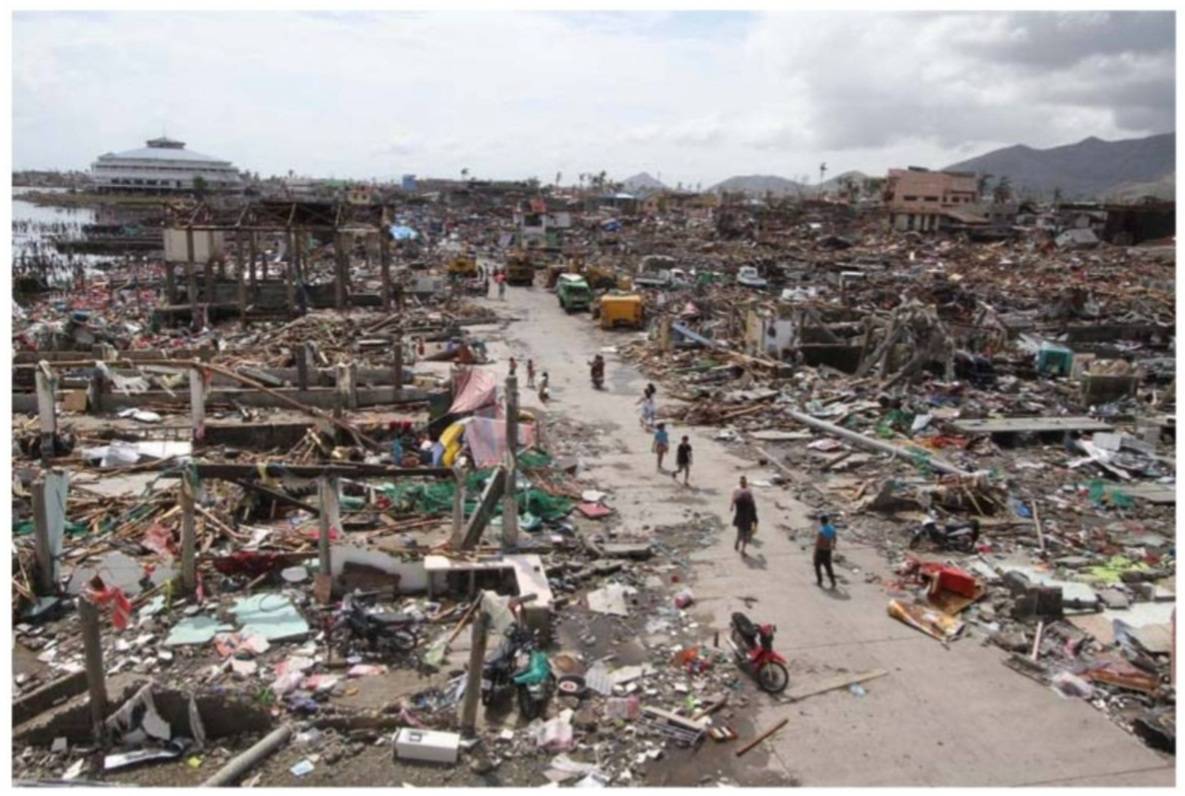'Yolanda' timeline: Events leading up to, during, after the catastrophic typhoon
The country marks the 10th anniversary of Super Typhoon Yolanda (Haiyan) on Nov. 8, 2023
A few days before Typhoon Yolanda made landfall on Nov. 8, 2013, the Philippine government prepared the country for the storm, also known as Haiyan around the world, as though they were expecting an unexpected visitor.
Forty-eight hours before its landfall, Yolanda intensified into a “super typhoon,” making it one of the strongest tropical cyclones ever to hit the Philippines.

It formed in favorable conditions over the Pacific Ocean, reaching maximum sustained winds of 235 kilometers per hour (kph) and gustiness of up to 275 kph when it slammed the country, but according to Joint Typhoon Warning Center (JTWC), Yolanda’s maximum winds reached 315 kph and wind gusts up to 380 kph.
Below is a timeline of Yolanda's development and events leading up to, during, and following the catastrophic typhoon.
Nov. 2
A low pressure area (LPA) has developed east of the Pacific islands of Micronesia.
Nov. 3
The LPA was classified as a tropical depression by the Japan Meteorological Agency (JMA) and the JTWC.
Nov. 4
JMA and JWTC upgraded the tropical depression to a tropical storm category, and was named “Haiyan.”
Nov. 5
When the tropical storm passed through Micronesia, it was already a typhoon. It was three days away from making landfall in the Philippines at the time. The government has begun preparations to mitigate the worst effects of the typhoon.
Nov. 6
It became a super typhoon when it passed over Palau.
The Philippine Atmospheric, Geophysical and Astronomical Services Administration (PAGASA) gave it the local name “Yolanda” as it entered the country’s area of responsibility.
Tropical Storm Wind Signal No. 1 was also hoisted in Eastern Visayas and Mindanao.
The Philippine government anticipated the need for evacuation in the areas that were expected to be severely affected by the typhoon and had made preparations for food and relief operations.
Nov. 7
Eastern Visayas and Mindanao were under Tropical Storm Wind Signal No. 3, which was raised to TSWS No. 4 in the evening.
In areas that were predicted to be severely affected, rescue vehicles and personnel had already been dispatched.
Ahead of time, several regions announced class suspensions and preemptive evacuations from affected areas.
Nov. 8
Yolanda made landfall at 4:40 a.m. in Guiuan, Eastern Samar, packing maximum sustained winds of 235 kph and gusts of up to 275 kph, according to PAGASA.
The government agencies promptly established an incident command system and radio contact center following the devastation of most of the Visayas.
Due to the damage to communication and power infrastructure, there have been several areas that are inaccessible, and significant ports and airports have been closed by the government.
The super typhoon weakened significantly and left the country’s landmass in the evening.
Nov. 9
Yolanda moved out of the country’s area of responsibility and toward Vietnam and southern China.
The TSWS was also lowered in some areas of the Philippines.
Along with other support and assistance, there were clearing operations, relief goods distribution, and medical assistance. Additionally, there was an increase in transportation vehicles and communication hubs.
While the telecommunications companies took two to three days to restore service in the Visayas, the airports that had been closed due to the typhoon reopened.
The Red Cross also stated that the estimated death toll in Leyte and Eastern Samar alone is 1,200 persons.
Nov. 10
According to the Department of Social Welfare and Development, typhoon Yolanda was estimated to have affected over 2.1 million families, or approximately 9.53 million individuals.
Nov. 11
Former President Benigno S. Aquino III issued Proclamation No. 682, which declared a state of calamity over Samar, Leyte, Cebu, Iloilo, Capiz, Aklan and Palawan.
Both relief supplies and personnel were constantly being deployed. A price freeze was also put into effect.
At least 1,774 casualties were confirmed by the National Disaster Risk Reduction and Management Council (NDRRMC), with the majority of them coming from Eastern Visayas.
Nov. 12
According to estimates, Yolanda may have cost the Philippines up to P650 billion in damages, making it one of the most expensive disasters in Philippine history.
Nov. 13
Former President Aquino said that during this time, the government was estimating the number of deaths at around 2,000 to 2,500.
Meanwhile, there were thousands of families staying in evacuation areas. Ports, major roads and bridges were also cleared and already passable.
Nov. 14
Damages to the agricultural sector reached P6.9 billion, while the International Rice Research Institute donated flood-tolerant rice to farmers in affected areas. Bigas Brigade was also conducted in 40 towns of Leyte.
Nov. 15
NDRRMC recorded 3,621 casualties from which 1,140 were missing while injured individuals reached 12,165.
Damages to agriculture, fisheries and irrigation infrastructure amounted to more than P7 billion.
Electric power had been both fully and partially restored in parts of Visayas region.
Nov. 16
The total cost of damages has risen to P9.46 billion, of which P9.09 billion were attributed to agricultural losses and over P371 million to infrastructure losses.
Nov. 17
NDRRMC said the estimated cost of damage has already reached P10.339 billion.
The number of deaths had risen to 3,976 with 18,175 injured people and 1,590 missing individuals.
Relief goods have reached the entire province of Leyte.
In the following days, continuous relief operations, visitation, assessments and coordination had been done both by the local and national government.
To this day, there is still no exact number of total casualties from the said disaster.
There were still uncounted deaths, but based on the official figures in 2022, more than 6,000 people have died. (Lizst Torres Abello)